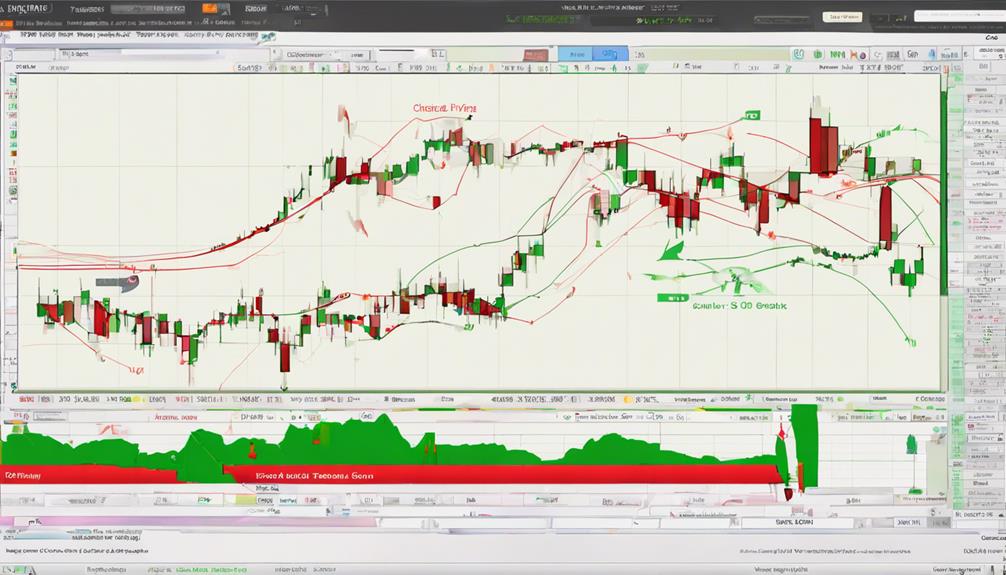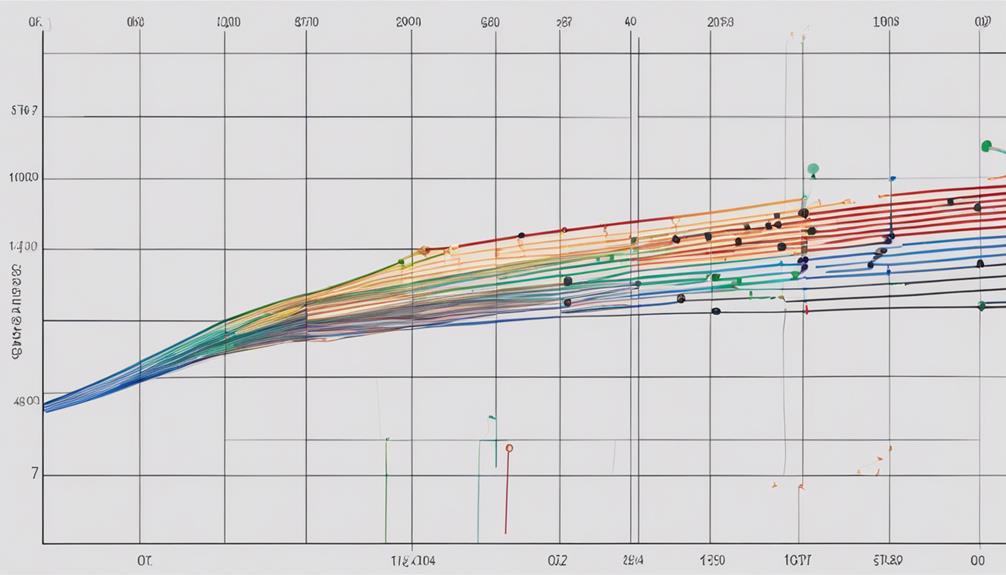Exploring the intricacies of the CMF indicator signals can unveil a wealth of insights for traders navigating the complex terrain of the financial markets. By dissecting the nuances of accumulation and distribution dynamics, zero line values, and strategic buy and sell signals, one can uncover a roadmap to potentially enhanced trading decisions.
However, there lies a pivotal question: how can traders effectively harness these signals amidst market volatility and evolving trends? The answer may lie in a deeper understanding of CMF's role in a comprehensive trading strategy, hinting at a realm where precision and strategic application could pave the way for trading success.
Understanding CMF Indicator Basics
The CMF indicator, devised by Marc Chaikin in the 1980s, serves as a pivotal tool for monitoring the accumulation and distribution of stocks within the financial markets. This indicator, also known as Chaikin Money Flow, calculates the volume-weighted average of accumulation and distribution over a specified period, commonly 21 days.
By analyzing the CMF readings, which fall within the range of +1 to -1, traders can gauge changes in money flow and buying or selling momentum. Positive CMF values above the zero line typically indicate market strength, suggesting bullish trends, while negative values below the zero line point towards market weakness and potential bearish trends.
Traders rely on the CMF to confirm breakout directions, identify potential trend reversals, and generate buy or sell signals based on the indicator's movements. The CMF indicator's ability to provide insights into the accumulation and distribution of stocks makes it a valuable tool in trading strategies.
Interpreting CMF Signals in Trading

Interpreting CMF signals in trading involves analyzing the flow of money within the market to identify potential buying and selling pressures. When the Chaikin Money Flow (CMF) signals are above zero, it suggests buying pressure, whereas signals below zero indicate selling pressure. Crossing the zero line can signal potential trend changes or reversals in the market.
Strong trends are typically identified by CMF readings above +0.25 or below -0.25. Traders often use CMF in conjunction with other indicators to confirm trade signals. Additionally, observing any divergence between price movements and CMF levels can provide insights into potential shifts in the market direction.
Understanding these CMF signals is crucial for traders to make informed decisions and capitalize on opportunities in the market effectively. By interpreting CMF signals accurately, traders can better navigate market trends and position themselves strategically in various trading scenarios.
Utilizing CMF for Trading Strategies

Harnessing the power of the Chaikin Money Flow (CMF) indicator in trading strategies provides traders with valuable insights into market dynamics and potential breakout opportunities. By analyzing the CMF, traders can identify the levels of buying and selling pressure present in the market.
This information is crucial for determining the strength of a trend and its potential direction, as CMF is based on the money flow volume. Traders can utilize CMF to confirm breakouts by aligning its movements with price action. When incorporating CMF into trading strategies, it is essential to analyze its position relative to zero to confirm breakout signals effectively.
This indicator assists traders in making informed decisions by validating breakout signals and anticipating potential trend changes. By understanding the dynamics of money flow through the CMF indicator, traders can enhance their trading strategies and improve their overall performance in the market.
Common Misinterpretations of CMF Signals

To avoid potential trading pitfalls, understanding the common misinterpretations of CMF signals is imperative for traders seeking to make informed decisions in the market. When delving into Chaikin Money Flow (CMF) analysis, here are key points to consider:
- Misinterpreting positive CMF values as buy signals without considering volume trends can lead to poor trading decisions.
- Failing to confirm breakout directions with CMF can result in false signals and missed opportunities.
- Incorrectly assuming that CMF alone can determine market strength without analyzing other technical indicators can be misleading.
It is crucial to remember that overlooking the significance of CMF crossing the zero line as potential trade signals can result in missed entry or exit points. Neglecting to consider the overall market conditions and relying solely on CMF signals can lead to trading errors and losses. By being aware of these common pitfalls, traders can enhance their CMF analysis and make more informed decisions in the dynamic market environment.
Advanced Techniques for CMF Analysis

Advanced techniques in CMF analysis encompass exploring divergence patterns between price and the CMF indicator to identify potential trend reversals. By utilizing various timeframes for CMF calculation, traders can gain insights into both short-term and long-term trends, enabling them to make more informed decisions.
Furthermore, combining CMF with other technical indicators such as moving averages or RSI can enhance signal accuracy and provide confirmation of potential trend shifts. Monitoring CMF values during significant market events or news releases is crucial as it can offer valuable information on market sentiment changes.
Additionally, integrating CMF with volume analysis can help validate buying or selling pressure signals, leading to more precise trading strategies. Overall, these advanced techniques in CMF analysis empower traders to interpret signals effectively, anticipate trend reversals, and navigate the dynamic landscape of the financial markets with greater confidence.
How Do Elliott Wave Patterns Tie into Decoding CMF Indicator Signals?
When decoding CMF indicator signals, understanding essential visual Elliott wave patterns can provide valuable insights into market trends. By recognizing these patterns within the CMF indicator data, traders can make more informed decisions about when to enter or exit a position, helping to improve overall trading success.
Frequently Asked Questions
How Do You Read a CMF Indicator?
Reading a CMF indicator involves interpreting market strength or weakness. Positive values signal strength, while negative values suggest weakness. Confirm bullish momentum with positive CMF and increasing price on higher volume. Confirm bearish sentiment with negative CMF and decreasing price.
Is CMF a Good Indicator?
CMF, a reliable indicator reflecting market sentiment, is valuable for assessing buying and selling pressure. When used in conjunction with other indicators, it can offer insights into trends and potential reversals, enhancing trading decisions.
Is Chaikin Money Flow Reliable?
Chaikin Money Flow's reliability hinges on its alignment with price trends and volume movements, making it a valuable tool when used alongside other indicators for confirmation. Validation through additional analysis enhances its efficacy in trading decisions.
What Is the CMF Technical Indicator?
The CMF technical indicator, created by Marc Chaikin, gauges stock accumulation and distribution through price and volume. It helps identify shifts in buying and selling momentum, informing traders about market strength and potential trends.
Conclusion
In conclusion, the CMF indicator serves as a valuable tool for traders to assess market strength, identify accumulation and distribution patterns, and generate buy and sell signals.
By understanding the basics, interpreting signals effectively, and implementing advanced analysis techniques, traders can enhance their trading strategies and make informed decisions.
Utilizing CMF in conjunction with other technical tools can provide a comprehensive view of market trends and improve trading outcomes.
